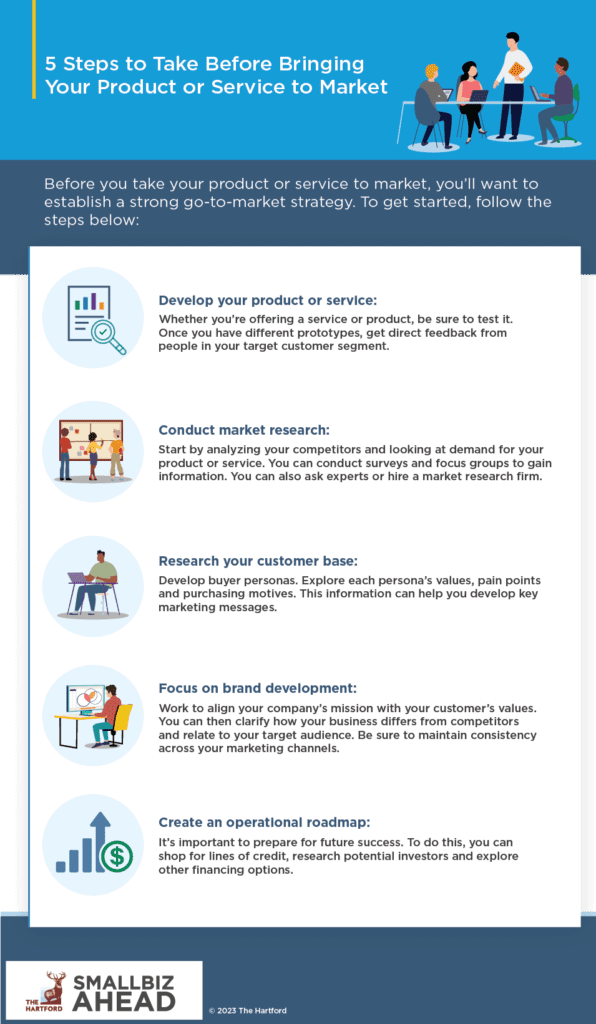Want to hear a story? Fair warning: It’s a rough one… unless you’re Apple.
Prior to launching its Vista operating system (OS) in 2006, Microsoft was considered a tech industry leader. Before taking Vista to market, though, the company failed to complete a thorough beta testing period for the new OS. By rushing to market, Vista’s developers missed the opportunity to catch hardware incompatibilities and to fully understand what customers wanted.
Not long after this disappointing release, Microsoft was forced to announce its first quarterly revenue drop in over two decades. The company eventually yielded its market position to rapidly rising Apple—part of the reason Time named Microsoft Vista one of the “10 Biggest Tech Failures” of the 2000s.
The Vista fiasco offers a lesson on the importance of thorough go-to-market (GTM) preparation. The good news for Microsoft is that it survived a spectacular failure. Its size helped it weather a storm that might have toppled smaller businesses. Now, small business owners can learn from Microsoft’s mistakes rather than repeating them.


The Risks of Rushing Your Product to Market
Too often, organizations take their product or service to market before they’ve done due diligence. Excited small business owners may be especially prone to rush their product to market. Unfortunately, hasty GTM strategies are more likely to fail.
A lack of testing can end in poor product quality and unfulfilled promises. Insufficient market research can result in targeting the wrong customer segment, overestimating demand, poor differentiation and insufficient marketing investment. And if you don’t take the time to understand your customers, you can end up with lackluster campaigns and missed marketing opportunities—or you could completely misinterpret their values and offend them.
Getting your product or service to market successfully requires more than a flashy launch campaign. Support your debut with a solid GTM strategy—one that’s built on a strong understanding of your industry segment as well as the operational ability to support customers and prepare for growth. Here’s how.
5 Elements of a Sound Go-to-Market Strategy
No two successful GTM strategies are the same, but they all share the same central pillars. As you prepare to take your idea to market, set your business up for success with these five ingredients of an effective GTM plan.
1. Research and development (R&D): Develop your product or service.
Your journey from idea to finished product will take time, but it’s worth the effort to do it well. If you’re offering a new service, test service models and poke holes in the service agreements to identify potential flaws. This way, your paying customers won’t have to.
Designing a product? Create and test prototypes with various designs and materials. Identify which ones perform best and document why. Ask for feedback from people who fit into your target customer segment. Iterate and improve until you’re confident in what you’ve created. And don’t forget to track your R&D expenses, as they may qualify for a federal R&D tax credit.
If Microsoft took the time to thoroughly test Vista, prodding for defects, the team likely would have identified the OS’s compatibility issues. Maybe the company could have avoided that major failing prior to its launch.
2. Market research: Gain foundational knowledge.
When KFC launched its Kentucky Grilled Chicken menu in 2009, it partnered with Oprah Winfrey to offer her viewers a coupon for a free grilled chicken dinner. About 10.5 million people downloaded the coupon. That’s a wonderful response right? Yes—if you’re ready for it.
But KFC wasn’t. Millions of customers across the country waited in lines that wrapped around the block, and nearly 60% couldn’t redeem their coupons. Those 6 million people weren’t happy.
Value perceptions of KFC dropped to levels lower than pre-promotion numbers. A KFC spokesperson said of the snafu: “The downloading of 10.5 million coupons… in a matter of hours far exceeded our most optimistic expectations.”
Their team hadn’t performed market research on Oprah’s viewership. As a result, they vastly underestimated the power of the Oprah Effect.
Market research is essential for both new and established businesses. It helps you gain a thorough understanding of your market, including various customer segments, market demand and top competitors.
As you plan your market research strategy, include analysis of competitors, demand, customers, cost and pricing. You can use surveys, focus groups and beta users. You may also draw on the expertise of relevant professional networks. Some small business owners choose to hire a market research firm or work with local business development centers to help guide and execute their market research.
When done well, market research helps you answer crucial questions that will save you time and money in the long run, including:
- Is there space and demand for my product or service?
- How can we differentiate our offering and value proposition?
- Can we realistically meet the demand and remain profitable?
- Will customers be willing to pay the prices we need to charge to stay profitable?
- Are there other markets into which I could expand as my company matures?
Use market research to shape a strong GTM strategy and reduce the risk of negative surprises.
3. Customer research: Know your buyer.
The year was 1996, and McDonald’s was ready to launch it’s Arch Deluxe burger with upscale condiments, peppery bacon and a potato bun. They knew it would be a success because their focus groups had raved about the burgers. But the Arch Deluxe flopped.
How did that happen? According to John List, author of The Voltage Effect, the people in the focus groups didn’t represent the McDonald’s core customer base. These flawed groups steered the company’s strategy in the wrong direction.
“The average person, as it turns out, would rather just have a Big Mac or a Filet-O-Fish and french fries. They don’t want the fancy stuff,” List told NPR. This case study illustrates why it’s essential to know your customers and what they want.
Avoid a mistake like this by learning about your customers. Most businesses serve several types of customers. Segment your customer groups and develop buyer personas to represent each one. Include their demographics and preferred marketing channels, but don’t stop there. Explore each persona’s values, pain points, purchasing motives and price sensitivity. Use this information to develop key messages and marketing content that will help you relate (and sell) to each group.
4. Brand development: Know your company.
When it comes to developing your brand, let your customers be your guide. Work to align your company’s mission with your customers’ values. While crafting your brand identity, consider what your company does well and what you want it to represent. This can serve as a guidepost for brand development.
Next, clarify how your business differs from competitors. Keep this positive differentiation in mind as you develop your brand’s voice and its look. If a competitor is known for inexpensive products but unreliable customer service, consider how your brand can come across as dependable and trustworthy. If you’re entering a market dominated by large corporations with bland brands, maybe you want to show a fun, energetic side that emphasizes your company’s personal story and service. Differentiating your business and relating to your target audience will help you build a brand that resonates with customers.
Once you’ve selected brand colors, designed a logo, chosen fonts and found your brand voice, make sure to maintain consistency across all marketing channels. Any deviations could confuse your customers.
5. Operational roadmap: Plan how you’ll scale for growth.
As you plan your launch, hope for the best and get your ducks in a row. Be prepared for growth: Wouldn’t it be heartbreaking to realize you’ve met a market need and customers love your business model only to have all that success break your company?
Consider the following questions as you create an operational to-do list that will pave a smooth road for growth:
- Are your internal processes as efficient as possible?
- Do you have the right team and are your employees trained?
- Do you have the tools you’ll need (including hardware, software, machines, etc.) or a plan for getting them?
- How will you support customers before, during and after their purchase to inspire long-term loyalty?
- Will customers require product or tech support after their purchase?
- Will you be able to expand your current manufacturing relationships, or will you need to look for additional partners as you grow?
- How will you meet your financing needs if a large purchase order or contract comes in?
- Will you need to hire any new vendors or outsource work as you grow?
- Have you considered your employee needs and do you have a hiring plan?
- Do you need a sales and distribution plan?
Answering these questions will help you identify the tools and processes you need to support business growth. You may also decide to shop for lines of credit, research potential investors or explore other financing options to be prepared for future success.
Have you encountered any unexpected hurdles during past launches? Share what you learned in the comments.
Next Steps: Want to get more tips on running your business? Sign up for the Small Biz Ahead newsletter to receive a weekly roundup of the latest tools, trends and resources.

